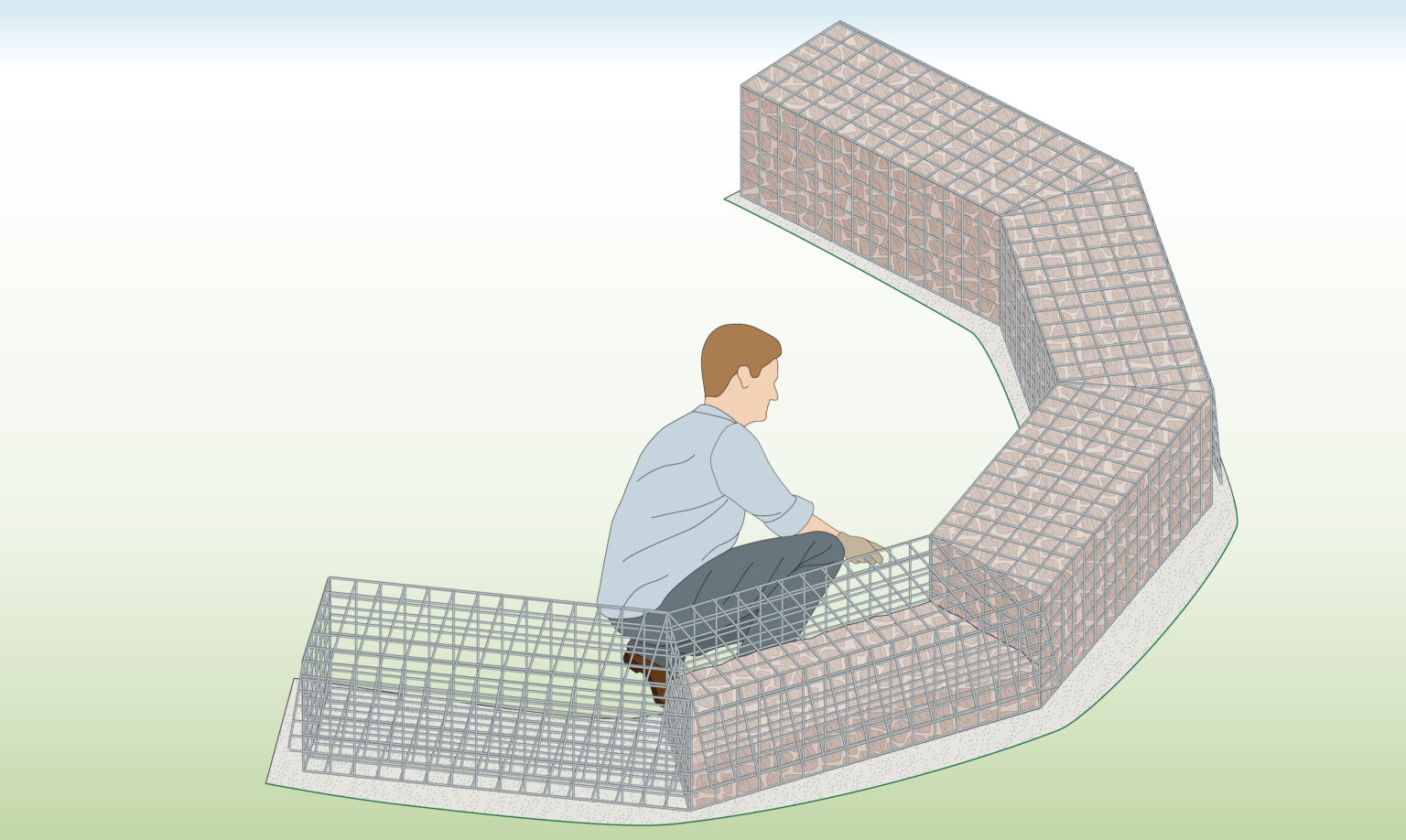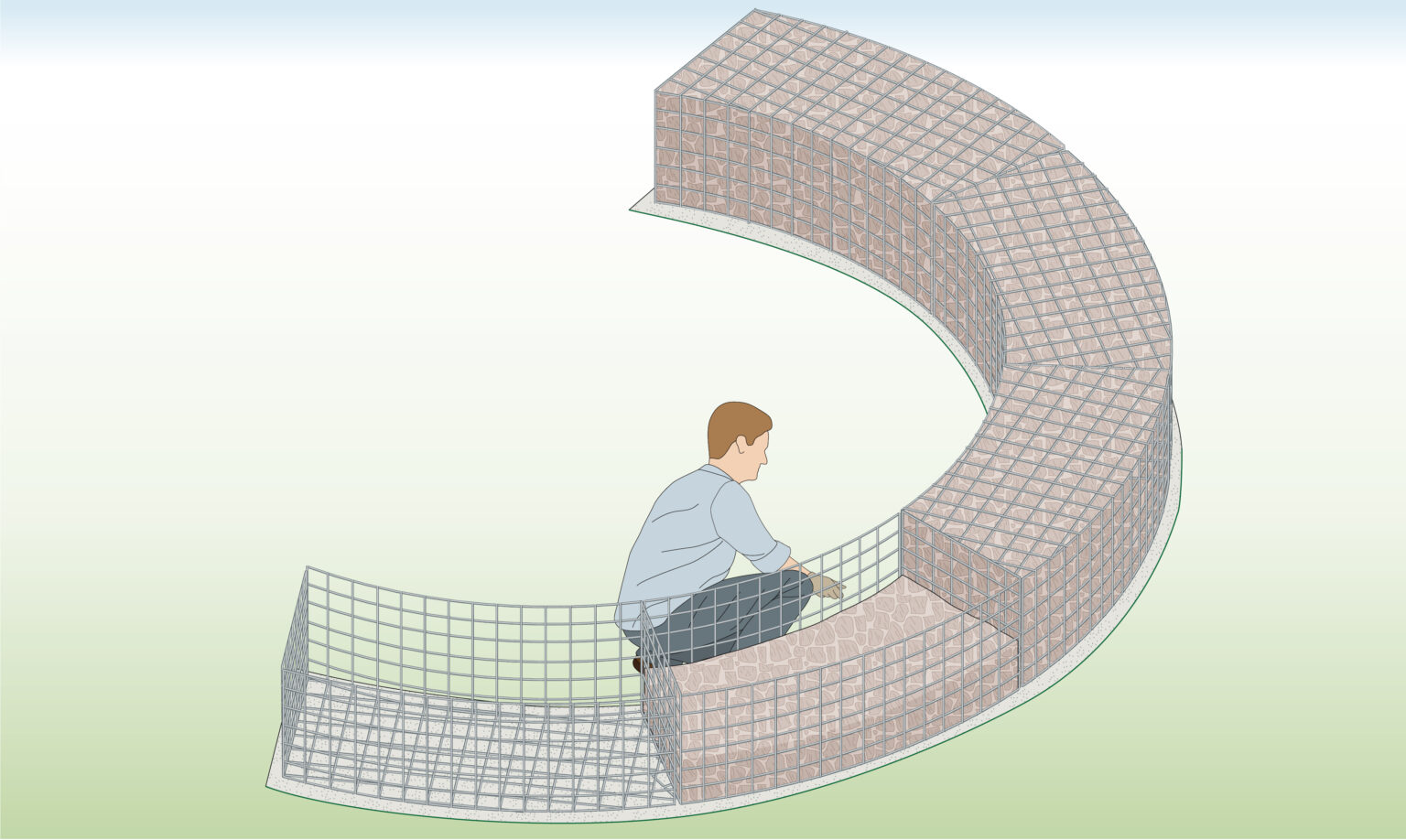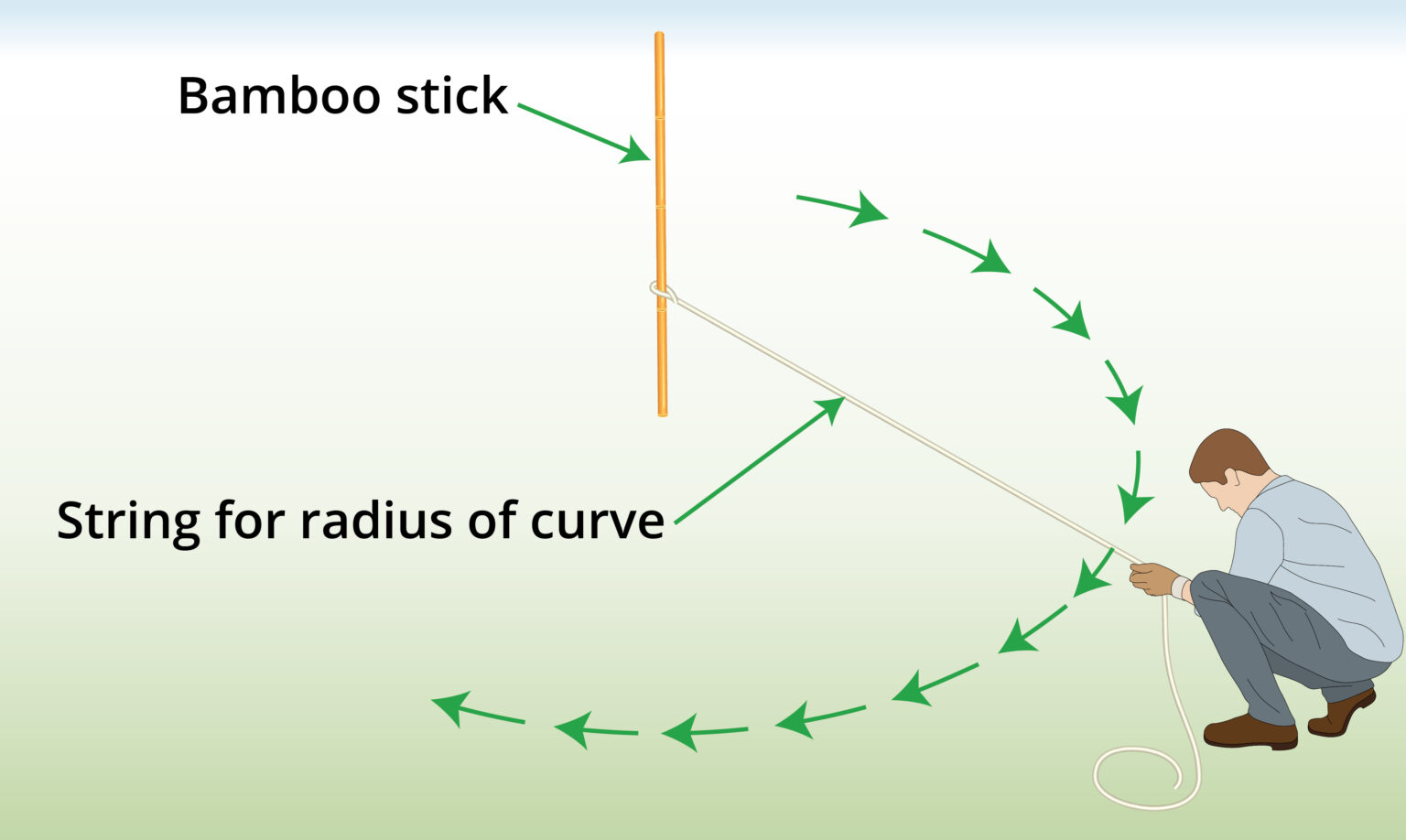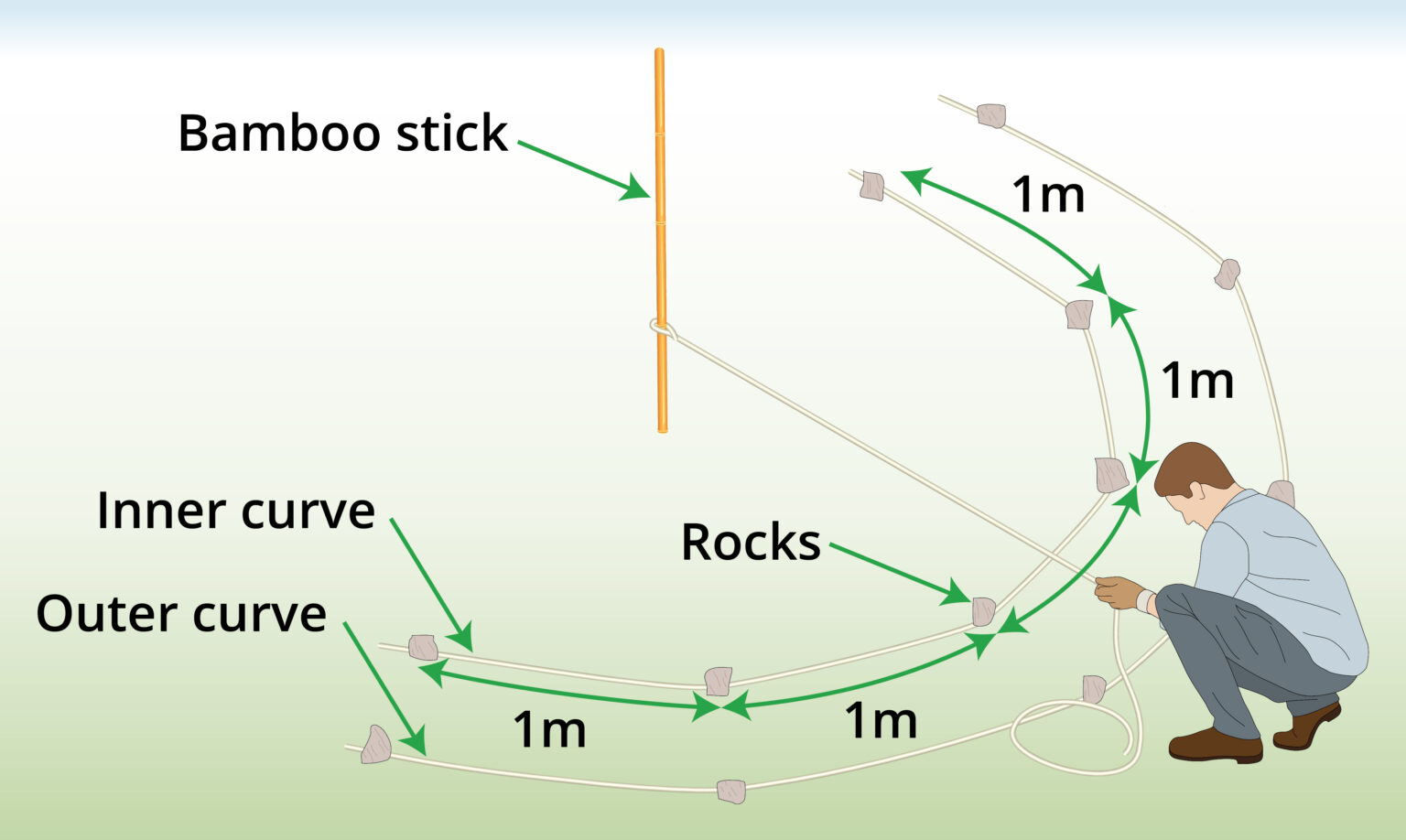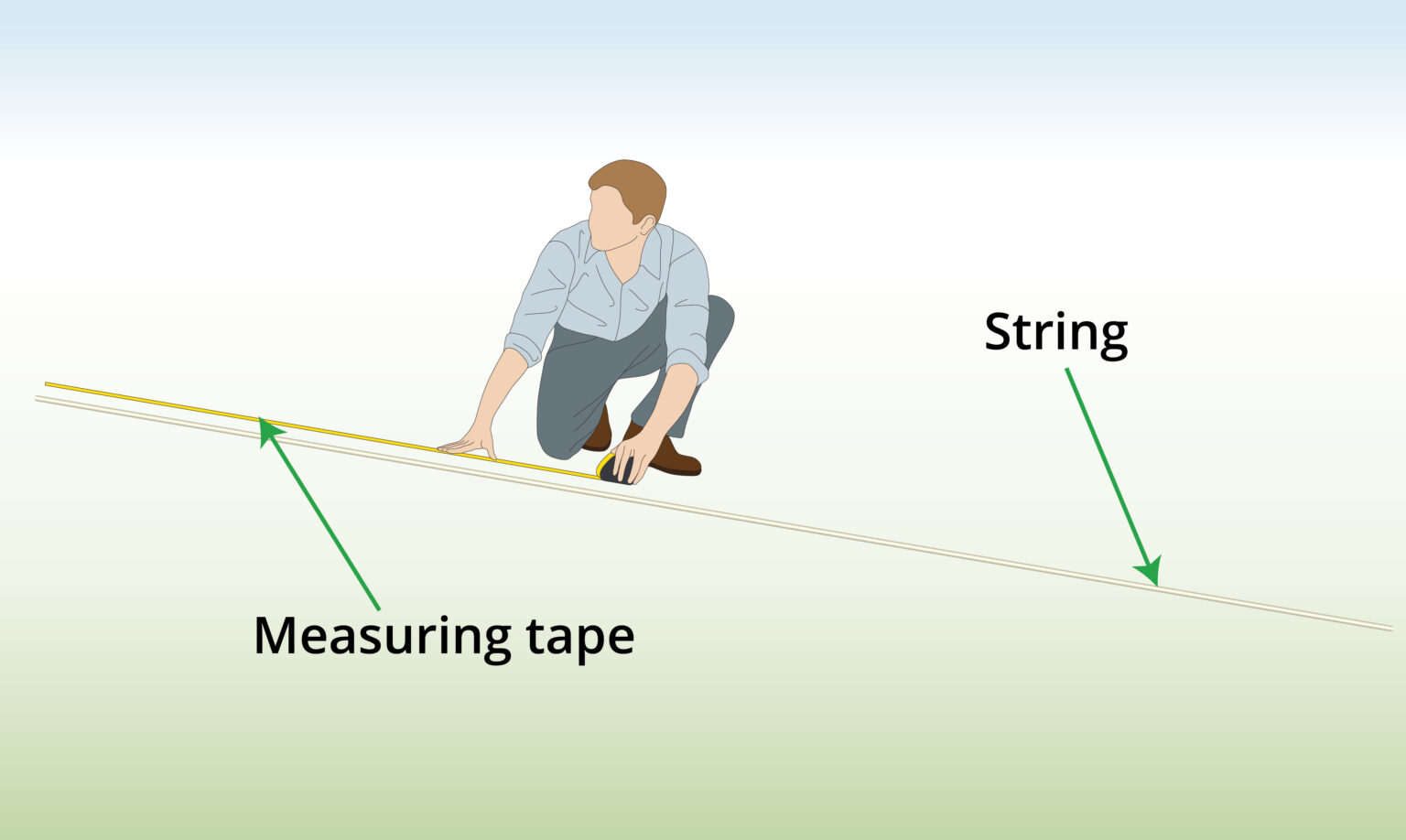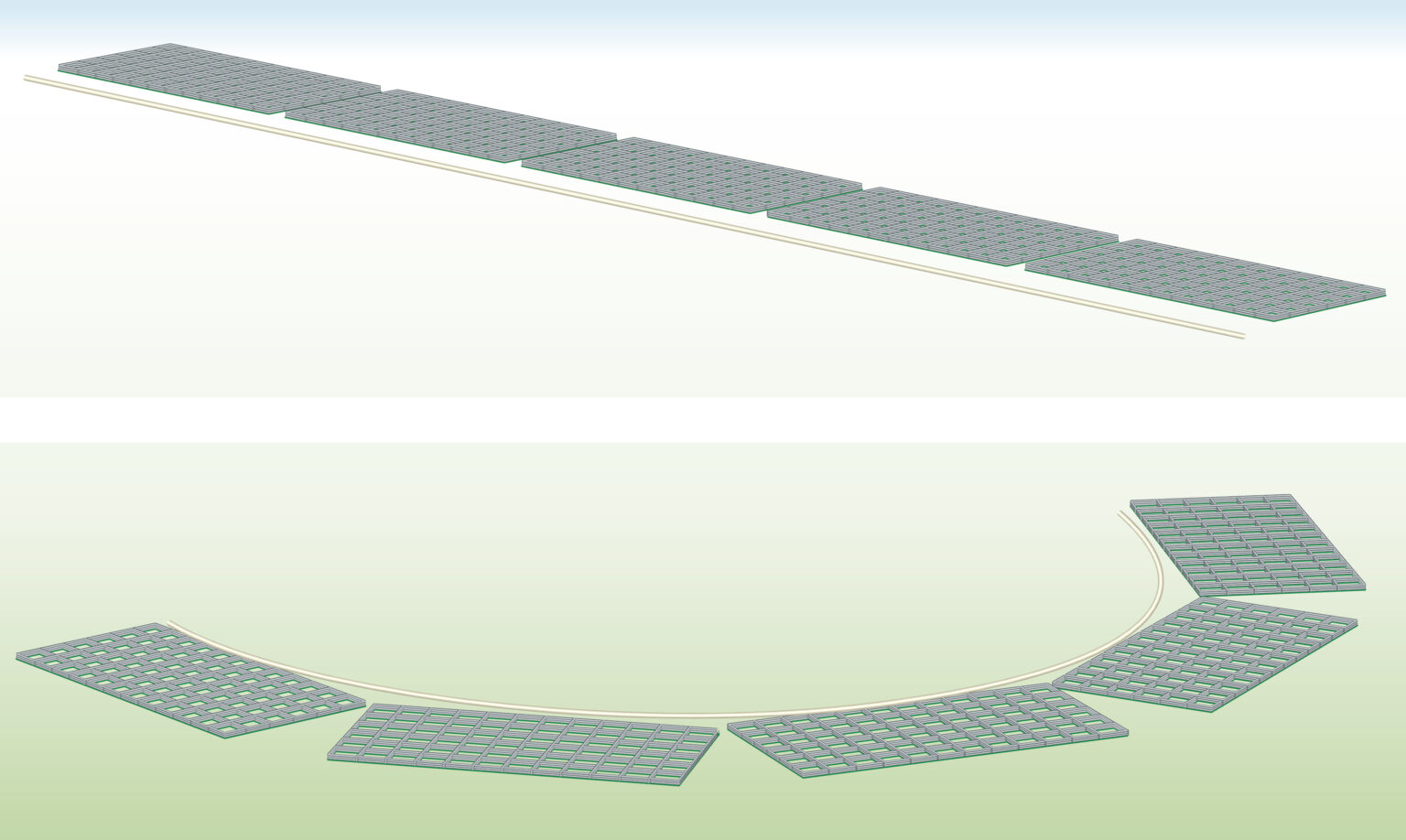How to Make a Curved Gabion Wall
Below you will find a step by step guide on how to make a curved gabion wall.
- Experience Required: Medium
- Tools Required: Shovel, Bolt Cutters, Spray Paint (optional), Tramper, Car Tire (or similar round object)
- Materials Required: Gabion, Gabion Stone, Geotextile, Helicals / Tying wire, Braces, Gravel
Step 1) Walk the curve
Step 3) Measure string
- Place the string on the ground.
- Utilize a measuring tape to determine the length of each string segment.
Step 4) Buy materials
- Obtain cages to match the length of your inner curve.
- Optimal lengths for cages are 45cm or 97.5cm for achieving the desired curve effect.
- Longer cages are acceptable, but they may not produce as pronounced of a curve effect.
